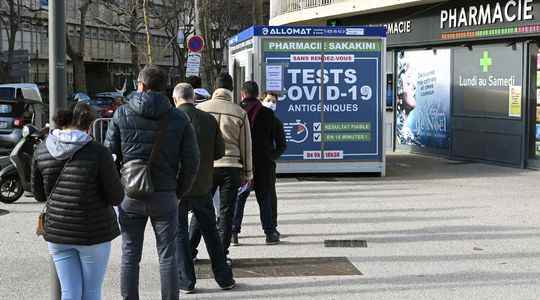The lights of the epidemic are back in the red. While all eyes are on the war in Ukraine or on the presidential election in France, the virus continues to progress while the French are no longer obliged to wear the mask – except in transport – since March 14. A measure lifted too soon, believe many specialists, while the indicators rose to record levels at the end of January, in particular contamination due to the contagiousness of Omicron, never went back down very low.
The World Health Organization (WHO) has also estimated that several European countries, including France, have lifted their anti-Covid measures too “brutally” and find themselves faced with a sharp rise in cases under the effect of the under- variant BA.2. The director of the WHO in Europe, Hans Kluge, said he was “vigilant” about the current epidemic situation on the continent, while claiming to remain “optimistic”.
A wave of contamination linked to BA.2
With the BA.2 sub-variant “which is taking advantage of the situation to spread and supplant BA.1 in Europe”, “we are witnessing an epidemic upsurge with a variant which is proving to be more transmissible and perhaps more pathogenic”, explained to L’Express on March 21, Yves Buisson, epidemiologist and president of the Covid-19 cell of the National Academy of Medicine.
Since the beginning of March, the contamination curve has risen in France to reach 98,928 new daily cases on average over seven days, according to figures published on Tuesday March 22 by the health authorities.
To view the infographic, Click here
The incidence rate is increasing everywhere and in all generations
“We are currently entering a new wave linked to the growth of the BA.2 variant of Omicron, when the previous one was linked to the BA.1 variant”, added for his part to L’Express Etienne Decroly, virologist at the University of Aix-Marseille. The incidence rate, which calculates the number of cases per 100,000 inhabitants, is at record levels throughout the territory.
To view the map, Click here
While a few departments still posted a lower rate a week ago, they are now all in the red. Finistère holds the place of the department with the highest incidence rate at 1559.75 cases per 100,000 inhabitants. Without taking into account the overseas territories, Seine-Saint-Denis is doing the best with a high incidence rate despite everything: 376.25 cases per 100,000 inhabitants. This remains well above the limit set at 50 for the alert threshold by the government this summer. At the national level, the incidence rate is 928 cases per 100,000 inhabitants.
The indicator affects all departments, but also all ages of the population. It is indeed going up in all age groups to reach roughly equivalent levels between 700 and more than 1000.
To view the graph, Click here
During the peak of the previous wave, it was 10-19 year olds who saw their incidence rate reach the highest levels with a peak of 6,816 the week of January 16 to 22.
Hospitalizations are no longer falling
In France, as elsewhere in Europe, the fifth wave of Covid-19 does not end: what is now worrying, in addition to contamination, are hospitalizations, which are no longer falling, reviving criticism of a premature lifting of measures by the government.
According to Catherine Hill, epidemiologist and biostatistician, the number of admissions to hospital, intensive care and the number of deaths “are the most reliable indicators” to monitor the epidemic. And they show “that the epidemic is starting again.”
To view the infographic, Click here
Hospitals are welcoming a total of 20,742 Covid patients (including 1,562 new patients), compared to 20,919 patients on March 15, thus marking a slowdown in the drop in the number of people hospitalized.
